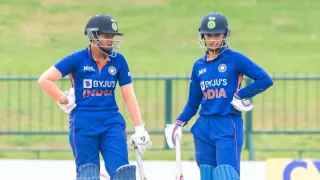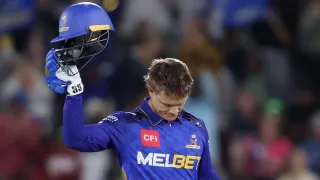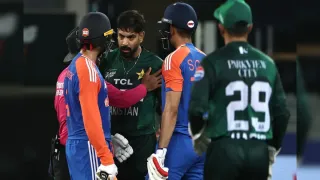Revolution on the Pitch: How VAR is Reshaping Football
Last updated on Sep 16, 2024 08:13 PM

How VAR is Changing the Game: The Impact of Technology in Modern Football
The introduction of the Video Assistant Referee (VAR) system into the world of football marked a transformative moment for the sport. Aimed at enhancing the accuracy and fairness of crucial game decisions, VAR has revolutionized how outcomes are determined on the pitch. Initially trialed in a handful of leagues, the system has swiftly become a staple in major football tournaments and competitions worldwide. By using video technology to review and overturn on-field decisions made by the head referee, VAR seeks to correct clear and obvious errors and serious missed incidents in four game-changing situations: goals, penalty decisions, direct red card incidents, and mistaken identity. This technology’s integration into football was driven by the desire to bring transparency to the game and mitigate human errors that could affect the match's fairness and final result. As we delve deeper, we'll explore how VAR operates, its significant impact on the flow and strategy of the game, the controversies it has sparked among fans and professionals alike, and what the future holds for technology in football.
Mechanics of VAR Operation
The mechanics behind the Video Assistant Referee (VAR) system are intricate, reflecting a blend of technological precision and rigorous procedural standards aimed at ensuring the utmost fairness in football matches. At its core, VAR operates as a support system for the on-field referees, providing a second look at crucial decisions that could potentially alter the course of the game.
When a questionable incident occurs on the pitch—whether it's a potential goal, a penalty decision, a direct red card incident, or a case of mistaken identity—the on-field referee can initiate a VAR review. Additionally, VAR officials, who monitor the game from a remote location equipped with multiple high-definition screens, can recommend a review if they notice a clear and obvious error. Once an incident is flagged, the VAR team examines the replay from various angles before advising the main referee on the field.
The final decision rests with the on-field referee, who may view the incident on a pitch-side monitor to get a clearer perspective, mirroring the principle that the human element should remain central to the game's adjudication. This ensures that while technology plays a crucial role in aiding decisions, it does not supplant the referee's authority.
Integrating VAR into football has required not just technological setups, but also a cultural shift within the sport—players, coaches, and officials alike must understand and adapt to the influence of technology on traditional gameplay dynamics. For instance, understanding how to strategically handle game pauses for VAR reviews might resemble knowing when to engage in a leisurely yet strategic Thimbles game online, where patience and attention to detail can significantly sway the outcome.
This balance of technology and tradition is what makes VAR a fascinating development in modern football, promising to evolve further as the technology itself advances.
Impact on Game Dynamics and Rules
The introduction of the Video Assistant Referee (VAR) has notably shifted the dynamics and rules of modern football, impacting everything from game tempo to tactical approaches. One of the most evident changes is the alteration in the flow of the game. Due to VAR reviews, which require pauses to scrutinize critical moments such as goals, penalty claims, and red card incidents, matches now experience intermittent stops. These interruptions can affect the momentum of teams, potentially cooling down players who thrive on the rhythm of uninterrupted play.
Furthermore, VAR has led to changes in how players and coaches approach the game. Knowing that every significant incident can be meticulously reviewed, there's an increased emphasis on discipline, especially in penalty areas. Defenders are more cautious about committing fouls or engaging in risky tackles, aware that their actions are under closer scrutiny than ever before. This heightened sense of caution can change how players traditionally interact on the field, potentially reducing aggressive plays that could turn games but also minimizing errors.
For coaches, VAR necessitates a new layer of tactical planning. Decisions about when to press an attack or defend conservatively can hinge on how likely it is that a play will be reviewed and possibly overturned. This strategic layer adds complexity to match preparation and in-game management, possibly leading to more conservative approaches in critical moments of a match.
Moreover, the precise rules regarding what VAR can review and the protocols for initiating a review have had to be meticulously integrated into the existing frameworks of football laws. This integration has not only challenged players and referees but also sparked extensive debate among fans and analysts, leading to ongoing discussions about the technology's influence on the spirit and spontaneity of the game.
In a similar vein, just as VAR is transforming football, technological advancements are continually reshaping how fans engage with sports. An example of this is how enthusiasts now have options like the BC Game download Android feature, enabling them to interact with their favorite sports-themed games directly from their smartphones, thus blending their love for football with interactive gaming experiences.
These developments signify a broader trend where technology both challenges and enriches traditional sports, altering fundamental aspects of games that have been played for over a century.
Controversies and Challenges
The integration of Video Assistant Referee (VAR) technology in football has not been without its share of controversies and challenges, sparking a wide array of debates across the sports community. One of the most prominent issues is the question of accuracy and consistency. While VAR was designed to make football fairer by correcting "clear and obvious errors," the interpretation of what constitutes such an error often varies. This subjectivity can lead to inconsistency in decision-making, which frustrates players, coaches, and fans alike.
Another significant challenge is the impact of VAR on the pace of the game. Football is celebrated for its flowing nature, and interruptions for VAR reviews can disrupt the rhythm of play, affecting the natural momentum teams build during the match. These pauses, sometimes lengthy, can lead to a decrease in spectator enjoyment and are often cited by traditionalists as detrimental to the spirit of the game.
The transparency of VAR decisions also remains a contentious issue. While stadiums equipped with giant screens can show replays, the communication about the reasons behind VAR decisions is often lacking, leaving spectators in the stands and viewers at home puzzled and dissatisfied. This opacity can diminish trust in the system, which is crucial for its acceptance.
Moreover, technological reliance introduces a new form of error—technical glitches and human error in operating the technology. These new error types can undermine the credibility of the decisions, which VAR was precisely supposed to safeguard against.
In discussing the impact of technology in sports, similar parallels can be drawn with the future of eSports betting, just as VAR is transforming football, technological innovations are revolutionizing how betting in eSports is approached, enhancing the accuracy and experiences of bettors through real-time data analytics and immersive digital environments.
As football continues to evolve with VAR, the controversies and challenges it brings to the forefront are essential in shaping not only the future of the game but also how technology is integrated in sports more broadly, ensuring that innovations enhance the sport without undermining its integrity.
The Future of VAR and Technological Advances in Football
As we look toward the horizon of football, the future of the Video Assistant Referee (VAR) system and other technological advancements presents a landscape ripe with potential for transformative changes. VAR, which began as an experiment to refine decision-making in football, is poised for continual evolution in its accuracy, efficiency, and integration.
Advancements in AI and machine learning are expected to greatly enhance VAR’s capabilities. Future iterations could see AI algorithms predicting and analyzing play patterns to assist referees in making even quicker and more accurate decisions. These systems might be able to provide real-time probabilities on decision-making elements, such as whether a tackle in the penalty area likely merits a penalty.
Integration with other technologies is also on the agenda. For example, augmented reality (AR) could be utilized to provide spectators in the stadium and viewers at home with immediate, transparent visualizations of VAR decisions. This would not only demystify decisions but also enhance the viewing experience by making it more interactive.
The use of wearable technology on players could also interface with VAR. Sensors might measure physiological or positional data, providing additional layers of information for VAR assessments on contentious calls like offsides or fouls, ensuring decisions are not just based on video evidence but enriched with a holistic view of the player’s condition and actions.
Moreover, as football embraces digital transformation, the infrastructure around VAR will likely become more robust. We can anticipate faster data transmission rates and enhanced camera technologies, offering higher frame rates and resolutions, to capture even the minutest details of player contact or ball placement.
The trajectory of VAR and technological integration into football underscores a broader shift towards a more precise and informed approach to the sport. As the game evolves, these technologies promise to refine the balance between maintaining the fluidity and emotional thrill of football while ensuring fairness and accuracy in officiating, mirroring the broader movement towards digital sophistication in sports.














Give Your Feedback